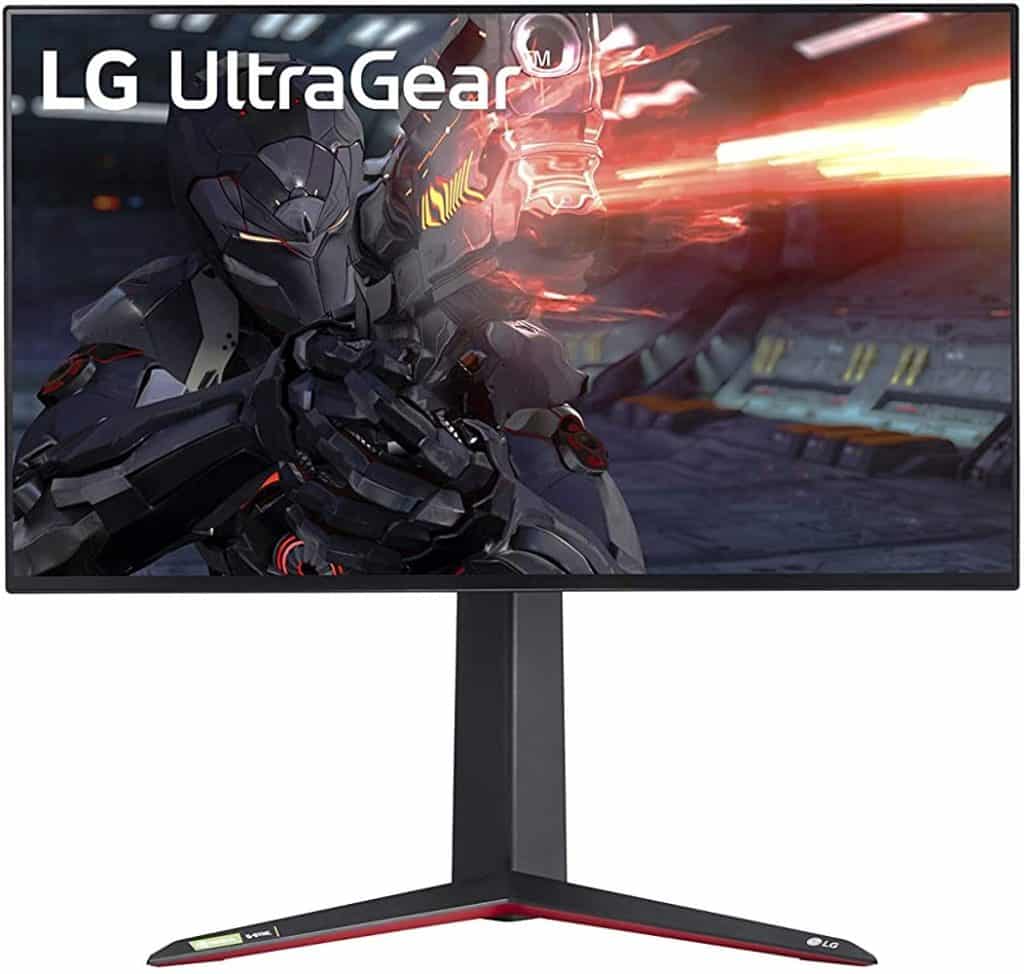
The LG 27GN950 offers specifications that are sought after by enthusiasts starting with its gorgeous 4K 144Hz IPS panel. The monitor competes at a more reasonable price point, but it offers premium features and characteristics that make it more desirable. The LG 27GN950 aims to dominate a circle that’s populated by a few yet ruthless contenders, making it very interesting to see what it can do.
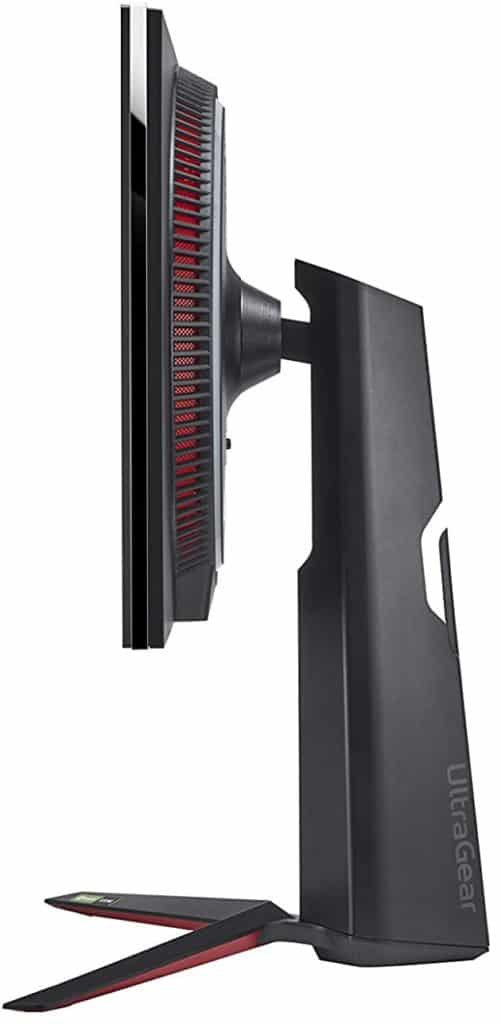
LG 27GN950 Specifications
- Screen Size: 27 Inches
- Resolution: 3840 x 2160 4K UHD
- Aspect Ratio: 16:9
- Panel Technology: In-Plane Switching (IPS)
- Refresh Rate: 144Hz (With Overclock)
- Response Time: `ms
- Contrast Ratio: 1000:1
- Brightness: 400 cd/m2
- Speakers: No
- Stand: Height – Yes
- Stand: Tilt – Yes
- Stand: Swivel – No
- Stand: Pivot – Yes
- VESA Compatibility: Yes (100 x 100)
- Connectivity DisplayPort 1.4 x 1, HDMI 2.0 x 2, USB 3.0 x 3, 3.5mm Jack x 1
- Dimensions (W x H x D): 23.9” x 22.5” x 11.5”
- Weight: 16.9 lbs
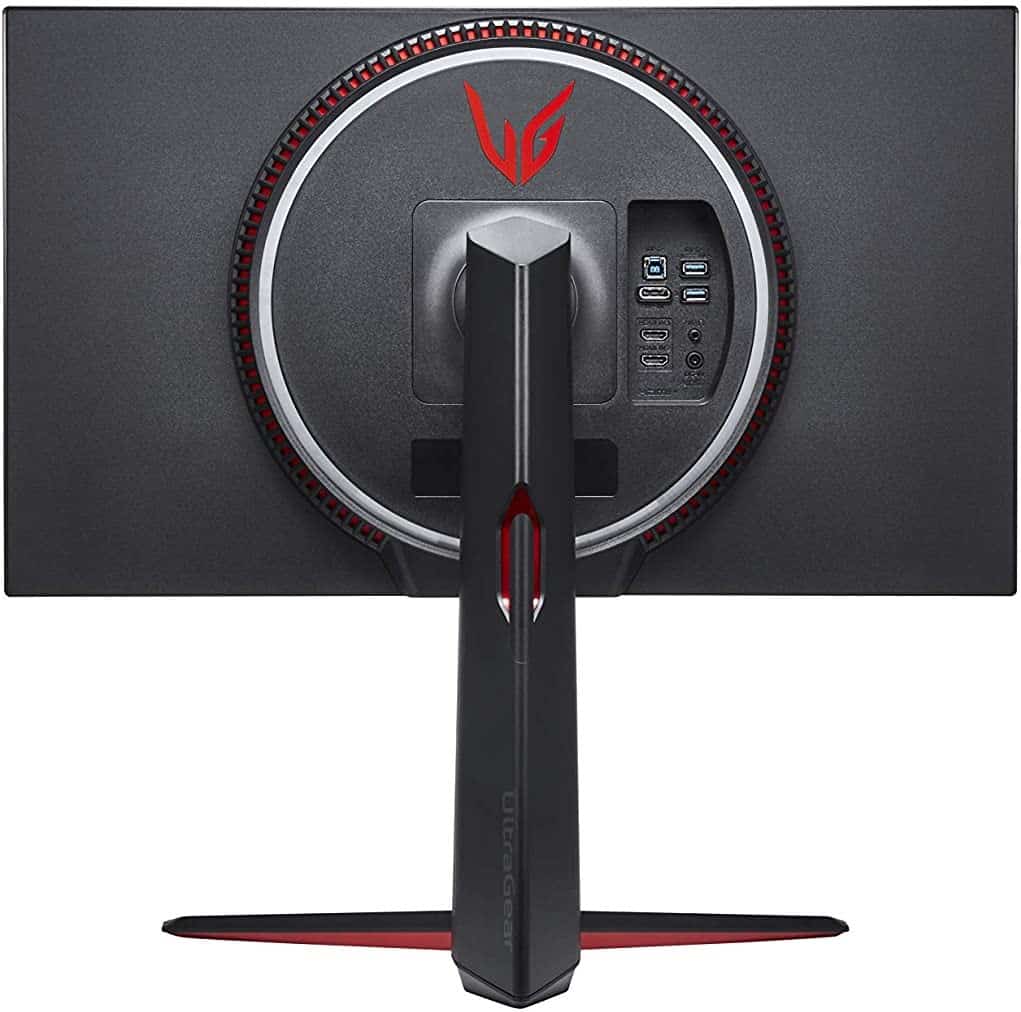
Design and Features
The LG 27GN950 inherits the same UltraGear aesthetic from older models like the LG 27GL850, but that isn’t a fault since the monitor looks elegant for a gaming variant. The monitor has a matte black chassis with discrete red accents which will always look new and easy to maintain. The monitor isn’t truly bezel-free, but the borders are thin enough to remain unnoticeable when the display is in use.
The LG 27GN950 isn’t a very large monitor by today’s standards, but its stand eats up quite a lot of depth on your desk. The boomerang-shaped base doesn’t eat up a whole area, but it’s almost a foot deep so it may encroach on your other peripherals. For many, this won’t be an issue, but streamers and multitaskers might disagree.
Build quality for the LG 27GN950 is exceptional thanks to the precision-guided processes at LG’s factory along with their material engineering. The plastics do not feel rough or flimsy, and you’d be hard-pressed to find cosmetic defects such as uneven gaps or seams. The stand doesn’t wobble at the slightest touch, so heavy typers won’t be dizzied by the constant pounding on the desk.
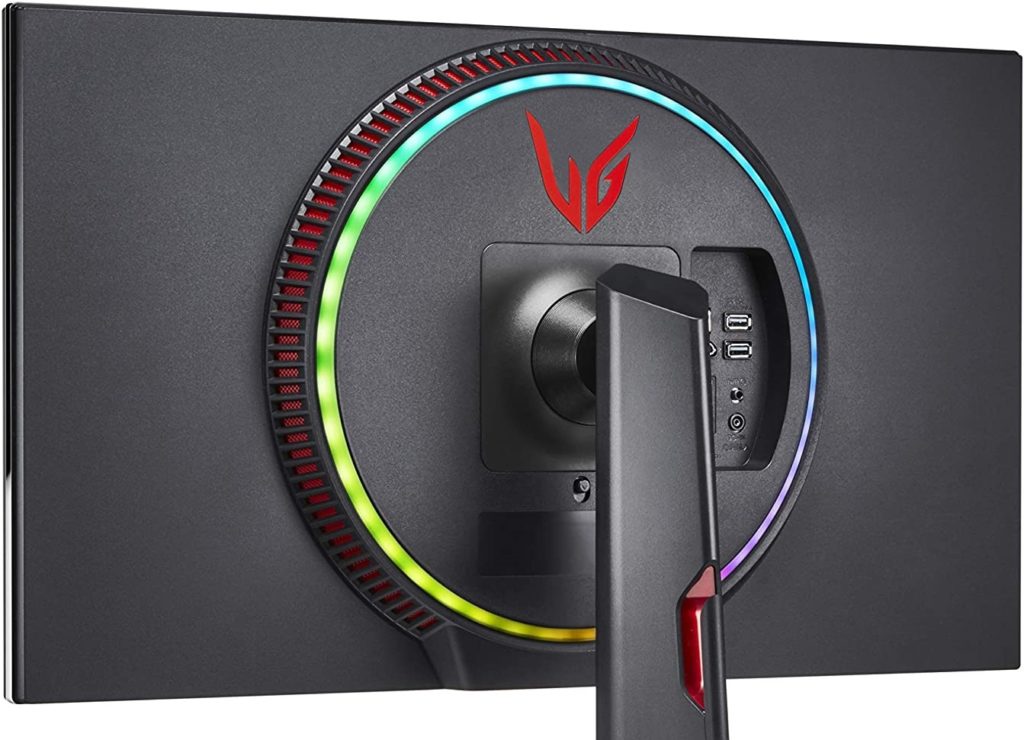
The rear of the chassis on the LG 27GN950 features the brand’s RGB Sphere Lighting that can run VideoSync mode which matches the LED’s colors on the image on the screen or the sounds. You can also set your favorite colors, but the former is a much more attractive and immersive feature in our opinion, just like Philip’s AmbiGlow. This add-on is also useful if you want to match the monitor to the rest of your lighting setup so you can synchronize your setup’s theme.
LG does well in our books when it comes to accessing and controlling their monitor’s OSD and sub-features. The LG 27GN950 includes an OSD joystick and the OnScreen control feature which lets you access the monitor’s settings via software in Windows. These two are quite handy since you don’t have to fumble around for the correct key in the dark and it makes the process so much faster.
The stand included with the LG 27GN950 offers great stability and flexibility so it is easy to get a preferred viewing angle. You can’t swivel it to the left or right, but you get a good amount of height adjustability, along with tilt and pivot. You can opt for VESA mounts with this model, but we only think its necessary for multiple-display builds or if you absolutely want to save space.
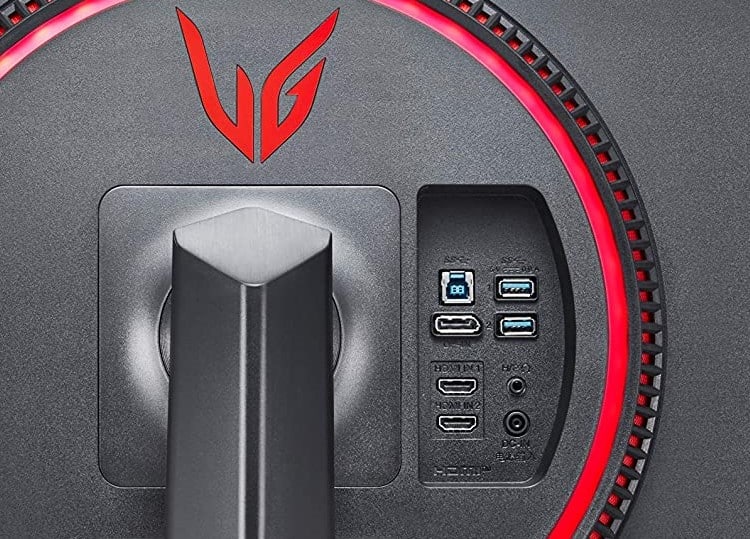
The LG 27GN950 includes DisplayPort 1.4 and two HDMI 2.0 for video inputs, but only the former can go beyond 60Hz in 4K. You also get a trio of USB 3.0 slots and a 3.5mm jack on the back panel which are handy for peripherals and headphones. However, what it’s missing it’s the newer HDMI 2.1 port the brand’s OLED TVs include which are necessary for the next-gen consoles launching soon.
The LG 27GN950 doesn’t have speakers, but it’s lack of the usually too weak for gaming or entertainment built-ins isn’t a deal-breaker. They do, however, come in handy in the current social weather where work from home setups are more common than ever.
Display and Performance
The LG 27GN950 boasts a 27-inch IPS panel with a 3840 x 2160 resolution, a 144Hz maximum refresh rate, and a 1ms boosted response time. The backlight is rated at 400 cd/m2, while the contrast ratio is at a typical 1000:1. The monitor is rated for DisplayHDR 600, so it has a few local dimming zones and a higher peak brightness when HDR is active.
4K in a 27-inch screen is great for games and movies since everything looks crisp and clean, even if you lower some graphics settings in many titles. However, some users who bias towards productivity may not like it since small objects such as text can become difficult to read unless they use scaling. It is great since you get a lot of extra space, but we’ve received a few feedbacks that it 27-inch displays are insufficient in conveying the expanse of the UHD resolution.
The LG 27GN950 covers 100% of the sRGB gamut easily with considerable extensions and around 96% of the DCI-P3 standard. The vibrant screen isn’t particularly accurate, but its deltaE average of 2.89 is already within an acceptable range for gaming and daily use. the color temperature is only slightly under the 6500K point, so white backgrounds won’t look jaundiced or yellowish.
Calibrating the monitor will improve the color dE to around 1.41 which is a great result, but still a bit short compared to some models like the Acer CP7271K. It’s already acceptable for content creation, but photographers might want to look at the latter even if it costs more. Buying the colorimeter for gaming purposes isn’t worth it, especially since you can get away with the few tweaks and find the extra saturation enjoyable.
The LG 27GN950’s backlight reaches as much as 460 cd/m2 in SDR, but its contrast is limited to 956:1 at 40% brightness. It’s a different picture when HDR kicks in since the monitor can reach a 745 cd/m2 peak and while the contrast soars to more than 9000:1 thanks to the dimming zones. Its not there yet when it comes to true HDR, but it offers excellent improvements in color and detail.
Panel uniformity for the LG 27GN950 could be better since there are some leaking at the lower corners of the screen. Some loss in contrast with clouding issues can become noticeable in dark scenes, but its not as visible in full color. Take note that this aspect varies due to manufacturing tolerances, so there are better units out there.
The LG 27GN950 is free from blurring or ghosting issues thanks to its very effective overdrive setting in the OSD. The default Fast setting is the best out of three since it effectively eliminates noticeable persistence without overshoot. But be wary of the Fastest setting since it will add overshoot which shows up as halos on the objects on the screen.
The LG 27GN950 is a FreeSync gaming monitor, but it also works flawlessly with Nvidia’s G-Sync Compatible mode. This duality is great for future upgrades, but it also makes the monitor extra attractive if you are planning on getting the top-end Nvidia RTX 30 Series GPUs. Input lag sits at 10ms like almost every 4K 144Hz out there, so there is no need to worry about de-synced instances or delays while gaming.
Thoughts on the LG 27GN950
The LG 27GN950 is a must buy if you are in the market for a 4K 144Hz monitor that will go nicely with the upcoming RTX 3090. The color quality isn’t the most accurate, but its stunning vibrance and richness will make you forget that there are some deviances. The screen’s HDR 600-grade performance is nice to have now since HDR support is becoming very common on many titles.
We love the aesthetics of the monitor because it looks elegant with a dash of RGB which comes in handy for those who want to play around with aesthetics. The only glaring complaint we have for the LG 27GN950 aside from the uniformity issues on the test sample is the lack of availability and the price that goes above the $799 targeted SRP when it pops up. The LG 27GN950 is a superb 4K 144Hz option, but the slow supply and huge demand will be the deal-breaker for many enthusiasts.
Pros:
- Excellent Gamut Coverage and Vibrancy
- High HDR Brightness and Contrast with Local Dimming (16 Zones)
- Attractive Design with RGB
- Fast and Blur-Free
- Great SRP
Cons:
- Some Backlight Leaks and Uniformity Issues
- Low Availability and Fluctuating Price
- Limited Connectivity
About the Author:
Paolo is a gaming veteran since the golden days of Doom and Warcraft and has been building gaming systems for family, friends, and colleagues since his junior high years. High-performance monitors are one of his fixations and he believes that it’s every citizen’s right to enjoy one. He has gone through several pieces of hardware in pursuit of every bit of performance gain, much to the dismay of his wallet. He now works with Monitornerds to scrutinize the latest gear to create reviews that accentuate the seldom explained aspects of a PC monitor.


Leave a Reply